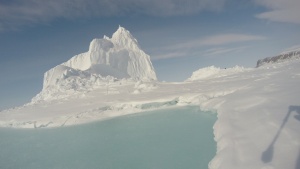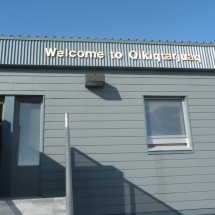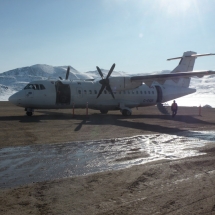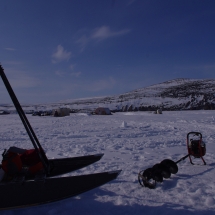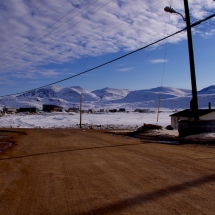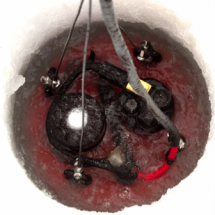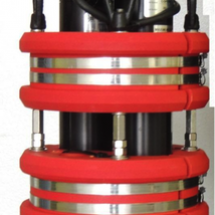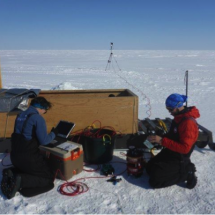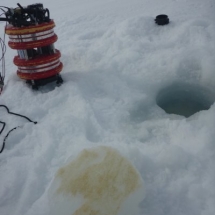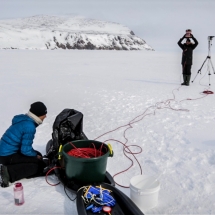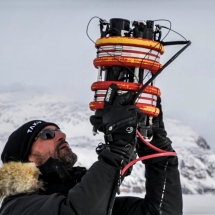How sunlight makes it through the sea ice ?
Phytoplankton are microscopic plants that thrive in the ocean currents and are the base of the marine food chain. They are an ecosystem indicator and are therefore important to monitor. Phytoplankton, like terrestrial plants, mainly need two things to grow: nutrients (i.e. food) and light.
The GreenEdge project aims to improve our understanding about phytoplankton in the Ice covered Arctic Ocean.
Climate change is affecting the Arctic Ocean, which is warming more than two times faster than oceans at lower latitudes. A direct consequence of this warming is the melting of the sea ice. The extent as well as the thickness of the sea ice is drastically decreasing. This melting enables more sunlight to enter the ocean surface layer through the sea ice.
Measurements of sunlights through the sea ice
One of the objectives of the GreenEdge project is to measure the sunlight that actually makes it through the sea ice and snow, and how this light fades with depth. To accomplish this goal, we use a C-OPS (or Compact Optical Profiling System), from Biospherical Instruments, Inc. (www.biospherical.com). The C-OPS has been customized for the Arctic environment through the creation of the so-called “IcePRO”. The IcePRO instrument consists of three irradiance sensors, which capture downward and upward travelling photons (light). One of the sensors is called the “atmospherical reference” and measures the incoming sunlight at the bottom of the atmosphere (i.e. above the sea ice). Two submersible sensors, mounted in a rugged cylindrical case are sent to a 100 m depth through a 25 cm diameter hole in the sea ice. One sensor looks upward, the other downward. Each IcePRO sensor is made up of nineteen smaller sensors that each measures a specific wavelength (color) 15 times per second.
Our organization at the research site
My routine on the ice camp is illustrated by this following video.
Time lapse of the IcePRO setting and deployment
from above the sea ice. Credit: Laurent Oziel
I first need to bring all of the equipment by sledge from the main tent. Afterwards, I install the tripod for the “atmospherical reference”. I connect the “atmospherical reference” and the red rugged cylindrical case to the “deck unit” (yellow box), which is an electronic system that allows us to monitor and acquire the data on a computer. Then, I turn on the system and start the calibration. When the system is ready, I walk with my shovel to the ice hole 50m away. I open the hole, put the IcePRO in the water, and fill the hole with snow.
Deployment of the IcePRO below the sea Ice. Credit: Laurent Oziel
I come back to my computer, start recording and manually send the IcePro to a depth of 100m using an electro-mechanical cable that is able to carry the weight of the IcePro and transmit data. One sure thing we see when we film the downwelling light in the water column (video2) is that the water is surprisingly bright, contrary to preconceived ideas that the water below the sea ice is dark and is unable to support phytoplankton life. We can see bright and dark patches depending on the amount of snow cover on the sea ice. It illustrates the extent to which light conditions can vary locally. We also observe an important amount of life: phytoplankton aggregations (black dots), zooplankton swimming all around and also, if you listen carefully enough, the song of male seals calling for females.
How will phytoplankton respond to these environmental changes?
However, our IcePRO measurements show that only about 0.1 percent of the sunlight that sustains phytoplankton growth (PAR, photosynthetically active radiation) gets transmitted through the ice sheet when there is a lot of snow. In contrast, over 5% of PAR gets transmitted when the snow load is low. That is a difference of a factor 50! So the snow appears to have a major role in determining the intensity of sunlight entering the water column. Today, on June 8th, we have about 1% of transmitted PAR in the water and this percentage is increasing every day while the snow and the sea ice is melting. I am eager to see the bloom before I leave the ice camp in a few days. I am so excited to see the opening of the sea ice, and to take a final skidoo ride.
